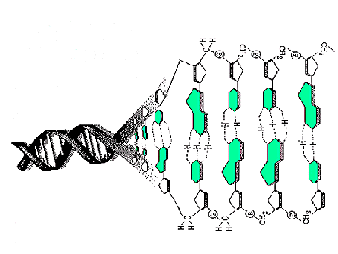 Once the key tissue is exposed, the target
genes are isolated through a polymerase chain reaction. These
target genes are the small amounts of DNA that are physically
extracted from the soft tissue. After two hours of amplification
by the polymerase chain reaction, enough copies of the target
genes are made, (millions of them) to proceed to the next step
of sequencing which is the breaking down of the DNA strands into
their respective bases to obtain the genetic code. (Cano et
al. 1992.).
Once the key tissue is exposed, the target
genes are isolated through a polymerase chain reaction. These
target genes are the small amounts of DNA that are physically
extracted from the soft tissue. After two hours of amplification
by the polymerase chain reaction, enough copies of the target
genes are made, (millions of them) to proceed to the next step
of sequencing which is the breaking down of the DNA strands into
their respective bases to obtain the genetic code. (Cano et
al. 1992.).
 When it comes to isolating plant DNA
from inclusions in Amber, it is a little bit more of a difficult
process. The reason for this is that plant DNA's nucleic acids
are often associated with powerful plant inhibitors that make
it difficult for the DNA to be amplified for sequence reading,
(the inhibitors are often bonded to the DNA and prevent the amplification
process). Certain compounds can be added however that block the
actions of the inhibitors and allow the DNA to be extracted and
amplified for sequence studies, (Poincar 1993.).
When it comes to isolating plant DNA
from inclusions in Amber, it is a little bit more of a difficult
process. The reason for this is that plant DNA's nucleic acids
are often associated with powerful plant inhibitors that make
it difficult for the DNA to be amplified for sequence reading,
(the inhibitors are often bonded to the DNA and prevent the amplification
process). Certain compounds can be added however that block the
actions of the inhibitors and allow the DNA to be extracted and
amplified for sequence studies, (Poincar 1993.).






